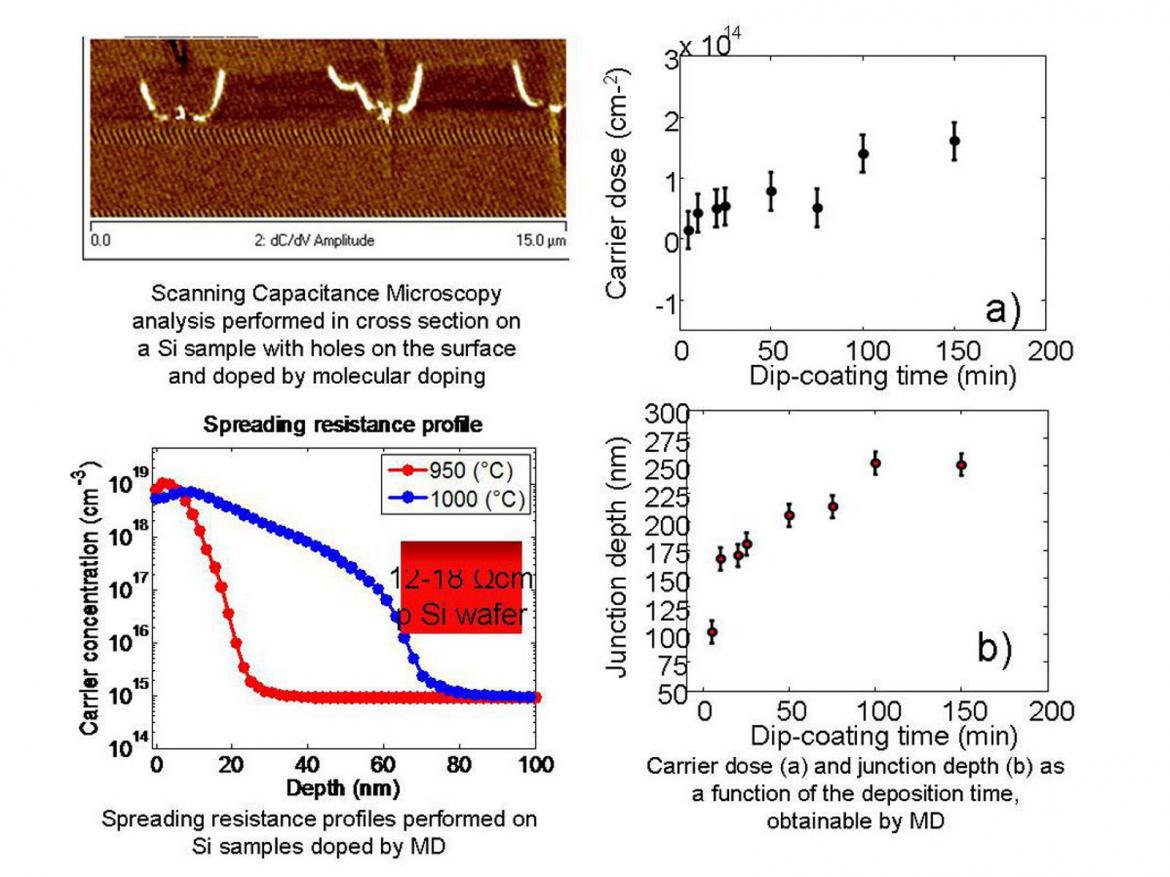
A comprehensive study on the physicochemical and electrical properties
of Si doped with the molecular doping method.
Rosaria Puglisi, Sebastiano Caccamo, Luisa D'Urso, Gabriele Fisichella, Filippo Giannazzo, Markus Italia and Antonino La Magna.
Physica Status Solidi A (2016) – Feature Article
First published: 24 June 2015
DOI: 10.1002/pssa.201532030
http://onlinelibrary.wiley.com/doi/10.1002/pssa.201532030/full
ABSTRACT
Semiconductor doping through solution-based self-assembling provides a simple, scalable and cost-effective alternative to standard methods and additionally allows conformality on structured surfaces. Among the several solution-based deposition techniques, dip coating is the most promising. It consists in immersing the target to be doped inside a solution containing the dopant precursor. During this process the molecule bonds to the target surface with a self-limiting process ruled by its steric properties. Successive annealing leads to layer decomposition and diffusion of dopant atoms inside the substrate. Most of the work on molecular doping lacks of information on the molecule/Si interface chemical properties, on the mechanisms of the molecule evolution during the coating and of its decomposition after the diffusion step. Moreover it has so far been devoted to the molecules design to tune the final dopant dose and distribution. Here the main results on the molecular doping are reviewed, and new findings on the interface characteristics, also in terms of mono- and multi-layers formation are presented. A systematic study, carried out by fixing the dopant precursor and varying the coating conditions, is also reported, demonstrating that the important doping features can be controlled precisely and that uniformity can be achieved at nm level.
This work has been financially supported by the project Tecnologie per l’ENERGia e l’Efficienza energetica (ENERGETIC), National Program PONR&C2007–2013 (PON02_00355_3391233).



